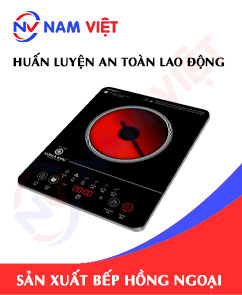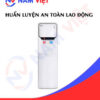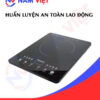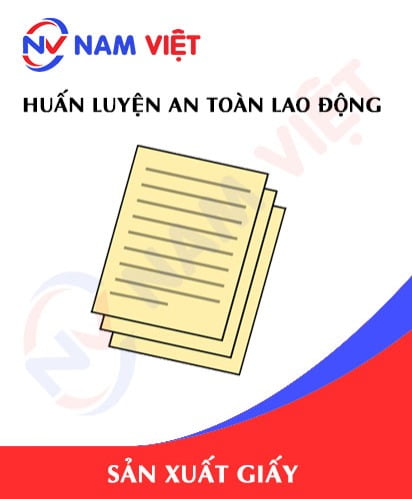Occupational Safety Training in Infrared Stove Manufacturing
99,000 ₫
Note: The above price is calculated for one person, the price may fluctuate depending on the number of trainees participating in the course and depending on market movements. For more accurate pricing support, please refer to the quotation table or contact our consulting staff directly.
Occupational safety is an important issue in infrared stove manufacturing factories and needs to be addressed promptly to ensure the health and safety of workers, and to enhance the reputation of businesses. The Occupational safety training course is one of the effective solutions to raise awareness about accident prevention for workers participating in infrared stove manufacturing.
Table of Contents
Toggle1. Overview of Infrared Stoves
a. What is an Infrared Stove?
Infrared stoves (Kitchen infrared) are a type of stove that uses infrared technology for cooking. Infrared stoves operate by using infrared rays to heat pots, pans, or any utensils placed on the stove.
Infrared rays are emitted from the infrared lamp beneath the stove surface and absorbed by the cooking utensils to generate heat, instead of using flames or sparks like traditional stoves.
Infrared stoves are commonly used in restaurants, hotels, or apartments with limited space. They can save energy and cooking time compared to other traditional stoves.

b. Types of Machinery for Producing Infrared Stoves
The manufacturing and assembly of infrared stoves involve a combination of various machinery and equipment, including:
- Metal cutting machines: used to cut, bend, and process metal parts into the required shapes for the infrared stove.
- Welding machines: used to weld metal parts together or to other components.
- Molding machines: used to shape plastic components.
- CNC lathes: used to process and finish metal parts with high precision.
- Plastic injection machines: used to produce plastic parts for the infrared stove.
- Printing machines: used to print logos, images, and promotional information on the surface of the infrared stove.
- Packaging machines: used to package the product and prepare it for transportation.
These devices are typically computer-controlled to ensure high accuracy and efficiency in the manufacturing and assembly of infrared stoves.

c. Infrared Stove Manufacturers in Vietnam
Notable infrared stove brands include:
- Kangaroo: A well-known infrared stove brand in Vietnam with a wide range of products catering to consumer needs.
- Bosch: A famous German brand specializing in home appliances and electrical devices.
- Electrolux: A Swedish brand known for diverse home appliance products.
- Philips: A well-known Dutch brand specializing in electrical appliances and health-related products.
- Xiaomi: A Chinese brand producing technology products, including infrared stoves.
- Panasonic: A Japanese brand producing electronics, home appliances, and health-related products.
- Midea: A Chinese brand producing home appliances and electronics, including infrared stoves.
d. Specific Jobs in an Infrared Stove Manufacturing Factory
Group 1
- Executive director, deputy executive director, and department heads in the infrared stove manufacturing factory.
Group 2
- Safety officers: manage safety in the factory, design safety procedures, supervise and encourage employees to follow safe work practices.
Group 3
- Material procurement: The factory must purchase necessary materials such as metal, ceramics, insulating materials, and electronic components for manufacturing.
- Metal cutting and bending: Metal parts of the stove are cut and bent according to templates.
- Machine processing: Metal parts are processed using CNC machines for high precision.
- Manual processing: Smaller metal parts are processed manually.
- Coating and finishing: After manufacturing, metal parts are coated and finished.
- Assembly: Metal parts, control units, and electronic components are assembled into the final product.
- Quality inspection: The completed product is tested to ensure proper operation and safety for users.
- Packing and transportation: Finally, the product is packaged and shipped to dealers and end customers.
Group 4
- Office work, service, sales, and marketing tasks.
- Manufacturing management, quality management, human resource management, material management, and financial accounting management.
- Design: Technicians and designers create the design of the infrared stove.

2. Overview of Occupational Safety Training for Infrared Stove Manufacturing
This article focuses on issues related to Group 3, because Group 3 is directly involved in manufacturing and faces the highest occupational safety risks. For reference on other groups, see here.
a. What is Group 3 Occupational Safety Training?
- Group 3 Occupational Safety Training consists of sessions that equip workers with awareness on how to prevent workplace accidents.
- This training helps workers recognize and avoid hazards, reducing the risk of accidents during work.
REGISTER FOR OCCUPATIONAL SAFETY TRAINING SERVICE
b. Training Duration
Initial Occupational Safety Training
- Total training duration is at least 24 hours, including examination time.
- 8 hours of theory on safety and labor hygiene policies and laws
- 8 hours of theory on basic knowledge of occupational safety and hygiene
- 4 hours of theory on specialized training content
- 2 hours of practical training on specialized content
- 2 hours of theoretical examination at the end of the course
The safety training center arranges multiple sessions depending on the workers’ schedules. Typically, there are 6 training sessions over 3 days, provided the manufacturing enterprise can allocate continuous study time.
Periodic Occupational Safety Training
- Before the occupational safety card expires, workers seeking renewal must undergo periodic occupational safety training, with periodic training duration being at least 50% of the initial training duration.
Explanation: The total duration of periodic occupational safety training is at least 12 hours, including examination time. Upon completion of the periodic course and passing the test, workers will have their occupational safety card renewed.
c. Training Content
| No. | TRAINING CONTENT | TRAINING DURATION (HOURS) | |||
| Total | Including | ||||
| Theory | Practice | Examination | |||
| I | Policies and Laws on Occupational Safety and Hygiene | 8 | 8 | 0 | 0 |
| 1 | Overview of the legal documents system on occupational safety and hygiene. | 6 | 6 | ||
| 2 | Standards and technical regulations on occupational safety and hygiene. | 1 | 1 | ||
| 3 | Specific regulations of state management agencies on safety and hygiene when constructing, expanding, or renovating facilities, including inspection and maintenance of machinery and materials with strict occupational safety requirements. | 1 | 1 | ||
| II | Basic Knowledge of Occupational Safety and Hygiene | 8 | 8 | 0 | 0 |
| 1 | Basic knowledge of hazardous and harmful factors in the workplace. | 4 | 4 | ||
| 2 | Methods to improve working conditions. | 1 | 1 | ||
| 3 | Safety culture in manufacturing and business. | 1 | 1 | ||
| 4 | Rights and obligations of employers and employees; policies and regulations on occupational safety; functions and responsibilities of safety staff. | 1 | 1 | ||
| 5 | Safety regulations, signage, safety equipment usage, personal protective equipment; first aid skills for occupational accidents; prevention of occupational diseases. | 1 | 1 | ||
| III | Specialized Training Content | 6 | 4 | 2 | 0 |
| Comprehensive knowledge of machines, equipment, hazardous substances; risk analysis, evaluation, management; safe working procedures for machines, equipment, and hazardous materials. | 6 | 4 | 2 | ||
| IV | Final Safety Training Examination | 2 | 2 | 0 | 0 |
| Total | 24 | 22 | 2 | ||
See more training content of all 6 groups
d. Occupational Safety Card
Upon completing the occupational safety training and passing the examination, workers will be issued an occupational safety card (commonly referred to as the Group 3 occupational safety certificate).
The Group 3 safety card displays information such as full name, date of birth, job, and specific working environment. It also shows training duration, a red stamp, and a signature confirming course completion.
According to the regulations on card issuance stated in Clause 2 of Article 24, Decree 44/2016/ND-CP, there are two cases:
- If there is a labor contract between the employer and employee, the employer must sign, stamp, and endorse the safety card for Group 3 employees after completing the training and passing the test.
- If the worker is freelance or seasonal with no labor contract, the training unit must sign, stamp, and endorse the safety card after the worker completes the training and passes the test.

3. Recognizing Hazards Affecting Workers During Infrared Stove Manufacturing
The hazards affecting workers during infrared stove manufacturing may include:
- Risk of fire and explosion: High electrical power is used to activate infrared stoves, so improper use may cause fire, explosion, or burns.
- Noise: Some manufacturing stages of infrared stoves can generate noise, especially during assembly.
- Electrical hazards: Infrared stove manufacturing involves many electrical devices; improper use may cause electrical risks for workers.
- Burn hazards: During manufacturing and assembly, workers may contact hot components and heat-resistant materials, which can cause burns if protective gear is not worn properly.
- Respiratory hazards: Manufacturing may generate dust and metal fumes, especially during welding, posing respiratory risks for workers.
- Other occupational accident risks: Manufacturing and assembly stages may involve cutting, grinding, and drilling tools, leading to injuries such as cuts, punctures, or other harm.
4. Common Occupational Accidents for Workers During Infrared Stove Manufacturing
Common occupational accidents for workers during infrared stove manufacturing may include:
- Fire and explosion: Accidents may occur due to using flammable materials or not following proper manufacturing procedures.
- Poisoning: Workers may be exposed to hazardous chemicals or toxic gases, especially if personal protective equipment is not fully worn.
- Cuts or punctures to hands and feet: Workers may suffer injuries when using machinery, equipment, or tools incorrectly or without proper protective equipment.
- Heat-related accidents: Workers may be burned by contact with heat-generating equipment during manufacturing or assembly.
- Traffic accidents during product transportation.

5. Safety Measures When Participating in Infrared Stove Manufacturing
Safety measures when participating in infrared stove manufacturing include:
- Ensure workplace hygiene: Protect workers’ health by wearing full personal protective equipment, using chemicals correctly, and keeping machinery, equipment, and tools clean.
- Ensure electrical safety: Electricity is a major hazard. Apply electrical safety measures such as maintaining a safe electrical system, lightning protection, overload protection, and proper use of electrical devices.
- Temperature control: Since infrared stoves generate high temperatures quickly, implement measures to control temperature and prevent burn accidents.
- Toxic gas control: Check and ensure the factory air remains safe, without toxic gases, especially carbon monoxide (CO).
- Occupational safety training: Workers involved in infrared stove manufacturing should be trained in occupational safety and proper manufacturing procedures, with regular supervision and inspections to ensure compliance.
- Use protective devices: Employ protective equipment such as infrared shields, temperature sensors, and alarm systems to ensure safety for workers and users.
- Regularly conduct workplace environmental monitoring in factories, collect and analyze harmful factors to adjust and reduce risks, preventing occupational diseases for employees.
6. Benefits of Occupational Safety Training for Infrared Stove Manufacturing
An Toan Nam Viet provides your business with the following benefits after completing occupational safety training courses according to Decree 44/2016/ND – CP regarding occupational safety and hygiene for companies and enterprises:
- Workers can recognize potential occupational hazards and take preventive measures to avoid accidents.
- Your business can establish risk prevention measures in manufacturing, operation, and maintenance processes.
- Reduce costs associated with potential workplace safety risks.
- Uninterrupted manufacturing improves labor productivity and product quality.
- Compliance with labor safety laws avoids legal risks.
- Enhances credibility and professionalism, elevating your brand.
Nam Viet’s training courses provide solutions to prevent external factors from endangering individuals, helping them avoid injuries or even fatalities.
REGISTER FOR OCCUPATIONAL SAFETY TRAINING SERVICE
7. Customer Feedback After Completing Occupational Safety Training for Infrared Stove Manufacturing
An Toan Nam Viet has years of experience supporting businesses in Vietnam, particularly in the southern provinces. This responsibility is highly valuable, so our Occupational Safety Training is increasingly professional. Our growth is fueled by positive feedback and constructive suggestions from businesses. Below are testimonials from our partners.
See more customer interviews after using our service from An Toan Nam Viet
8. Occupational Safety Training Capacity of An Toan Nam Viet
An Toan Nam Viet is a reputable and high-quality occupational safety training center in Vietnam, conducting continuous training at factories, manufacturing workshops, and construction sites nationwide (all 63 provinces).
REGISTER FOR OCCUPATIONAL SAFETY TRAINING SERVICE
Occupational safety training license
- An Toan Nam Viet has been inspected and certified by the Department of Safety under the Ministry of Labor – Invalids and Social Affairs, confirming compliance for occupational safety and hygiene training. This further strengthens our training capabilities.

Training materials and lectures
- Before being used in Occupational Safety Training Courses, training materials are reviewed to ensure accuracy and effectiveness.
- Instructors follow standardized teaching methods from An Toan Nam Viet, developed by experts in occupational safety and hygiene training to maximize knowledge absorption for trainees.
Facilities
- Controlling classroom factors affecting training enhances teaching efficiency and knowledge absorption.
- Our training facilities feature spacious classrooms meeting standards for area, lighting, and training equipment.
9. Nationwide Reputable Occupational Safety Training Center
At An Toan Nam Viet, we prioritize professional dedication to occupational safety training. We aim to equip workers with self-protection knowledge, contributing to national development.
We meticulously prepare all training details, from tools, teaching equipment, curricula, documents, sound, and lighting.
Our instructors are experts with extensive experience and research in identifying workplace hazards across industries and how to prevent them.
Lectures are practical, vividly presented for easy understanding, allowing workers to learn comfortably and effectively. Content aligns with Decree 44/2016/ND-CP.
Workers learn hazard prevention measures and self-protection techniques, applying them appropriately in real work situations.
Our training center is proud to provide reputable and professional occupational safety training with advantages including:
- Competitive training costs without compromising quality.
- Flexible training schedules adapted to company manufacturing.
- Fast and lawful certification procedures.
- Experienced instructors with many years in the field.
- Classrooms optimized to improve teaching efficiency and knowledge absorption.
- Lectures tailored to workplace safety in businesses.
- An Toan Nam Viet provides dedicated, professional, and prompt support for clients.

10. Additional References for Occupational Safety Training in Infrared Stove Manufacturing
- Occupational Safety Materials for Infrared Stove Manufacturing
- Complete Occupational Safety Training Materials
- Occupational Safety Training Test Materials
- Occupational Safety Training Curriculum for Infrared Stove Manufacturing
- Occupational Safety Multiple Choice Test for Infrared Stove Manufacturing
1 review for Occupational Safety Training in Infrared Stove Manufacturing
No comments yet















namchinh.haiphong341
Bài giảng sinh động!